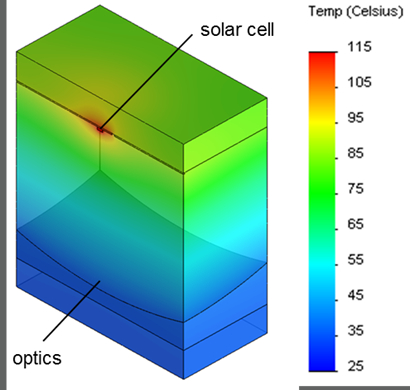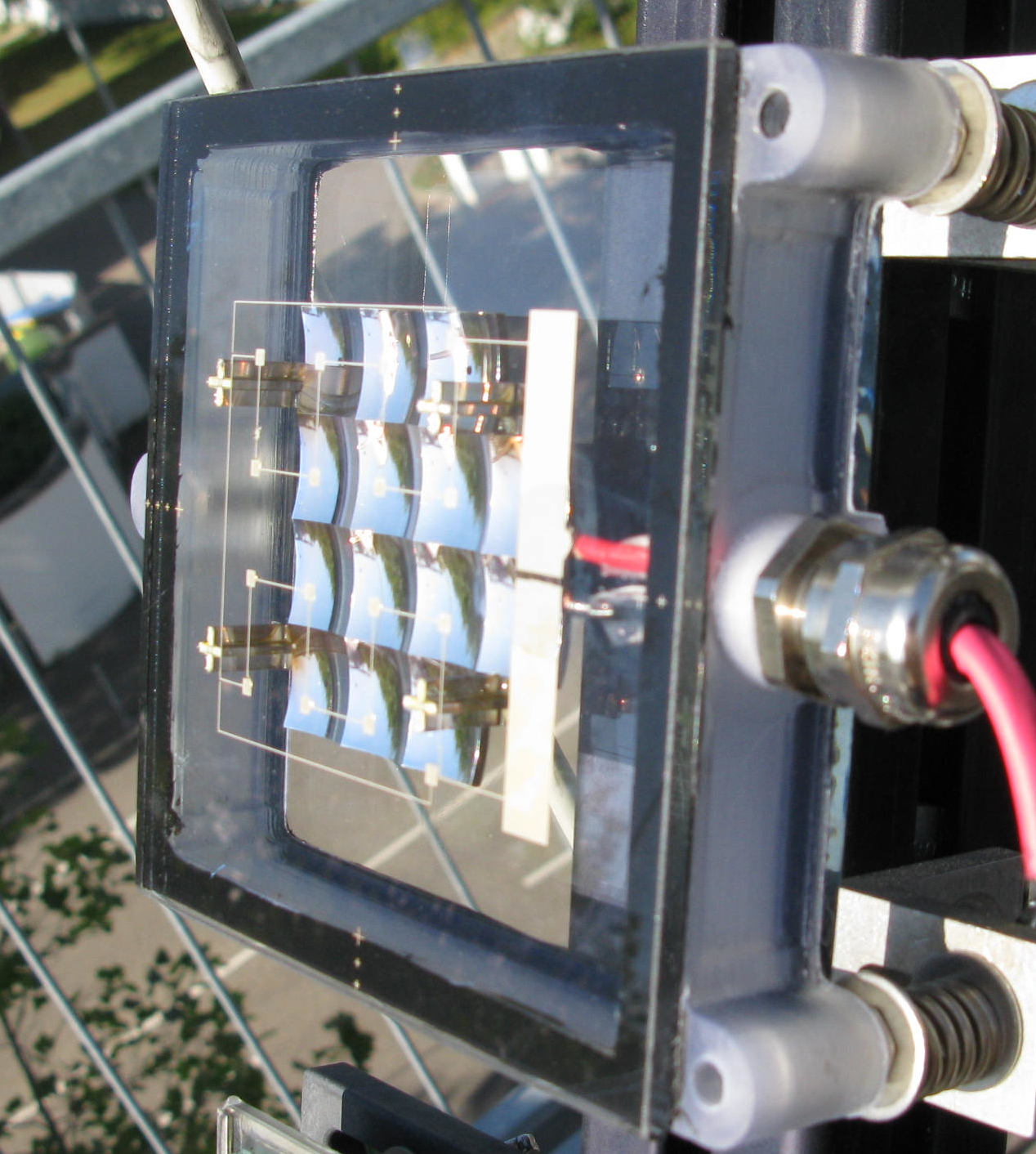| Duration: | September 2014 - February 2019 |
| Contracting Authority/ Sponsors: | Federal Ministry for Economic Affairs and Energy (BMWI) |
| Project Focus: |
HeKMod4 – Highly Efficient Concentrator Module with GaSb-Based Four-Junction Solar Cell
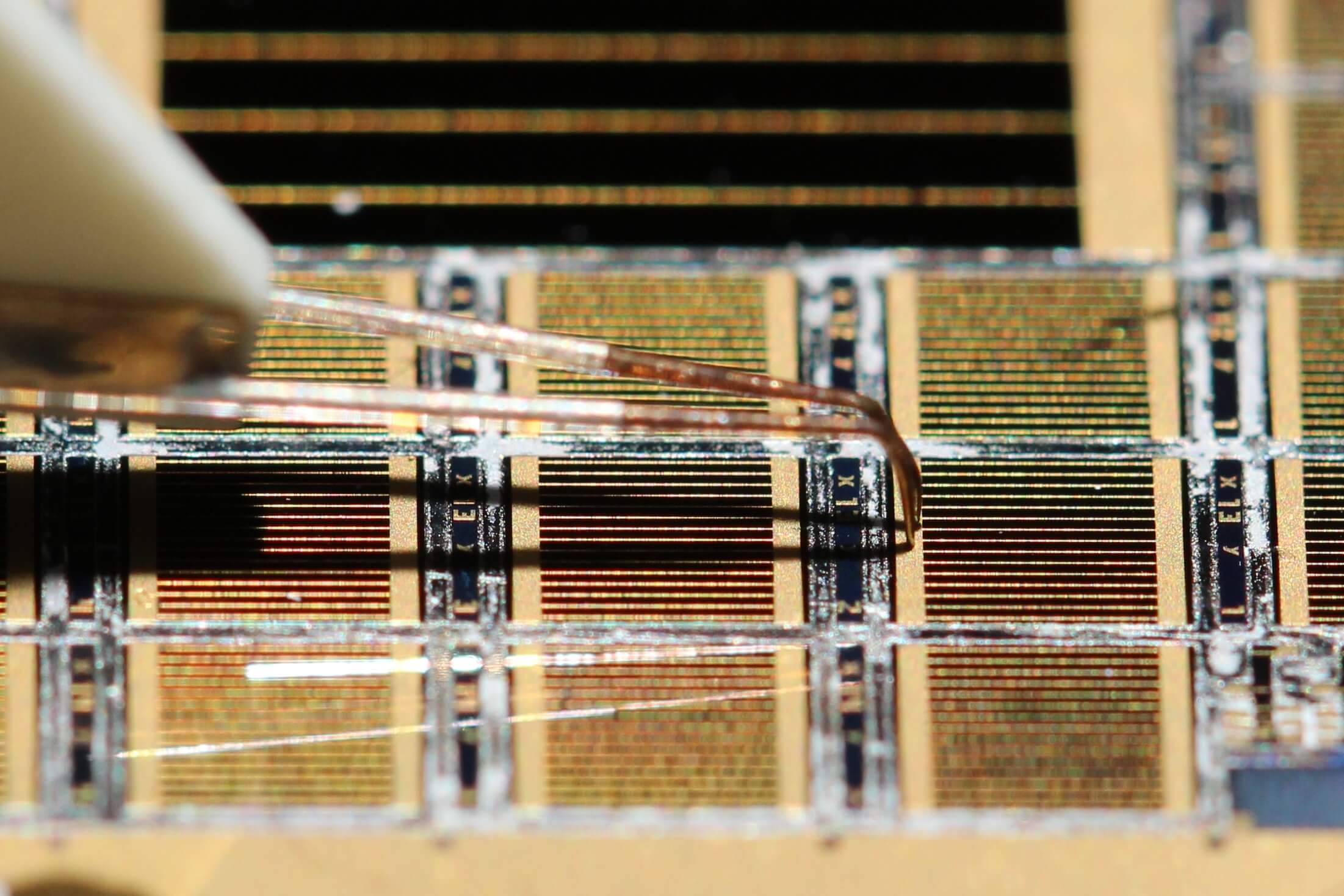
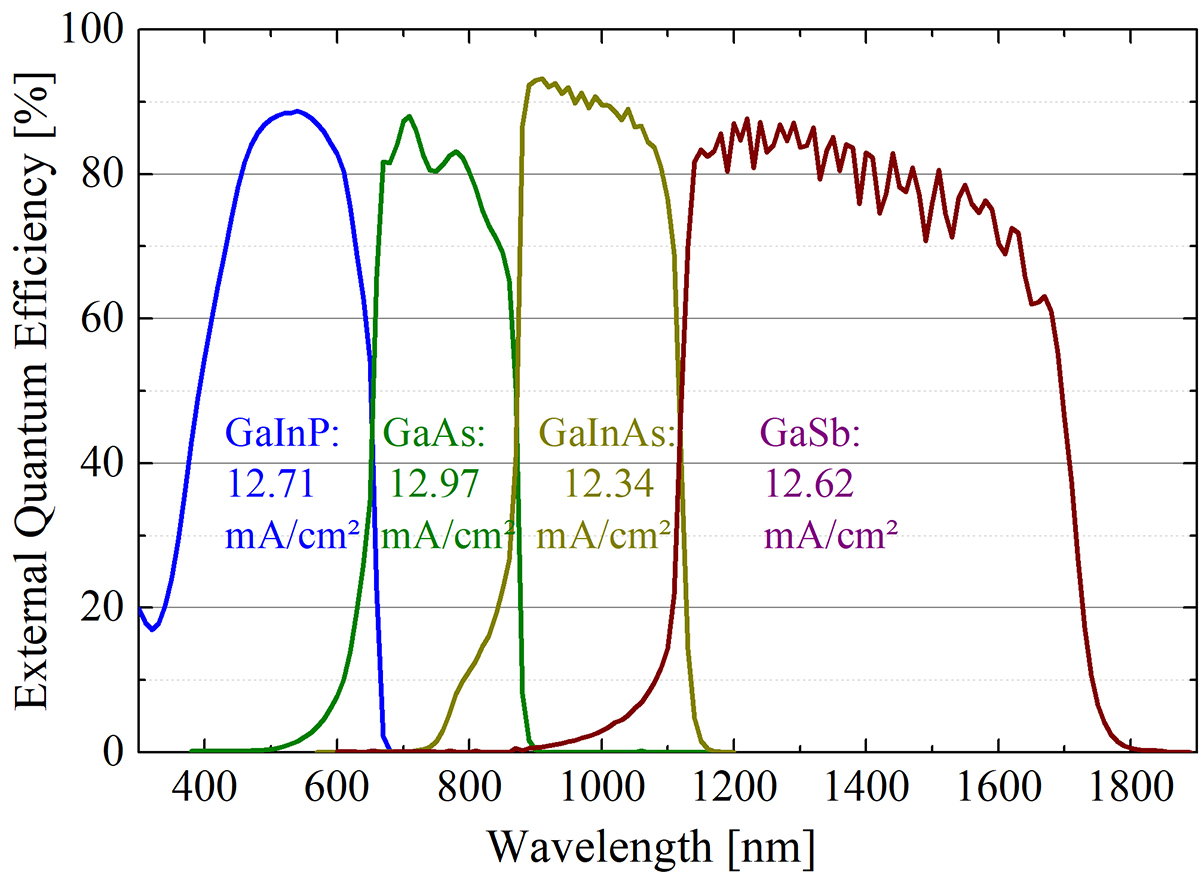
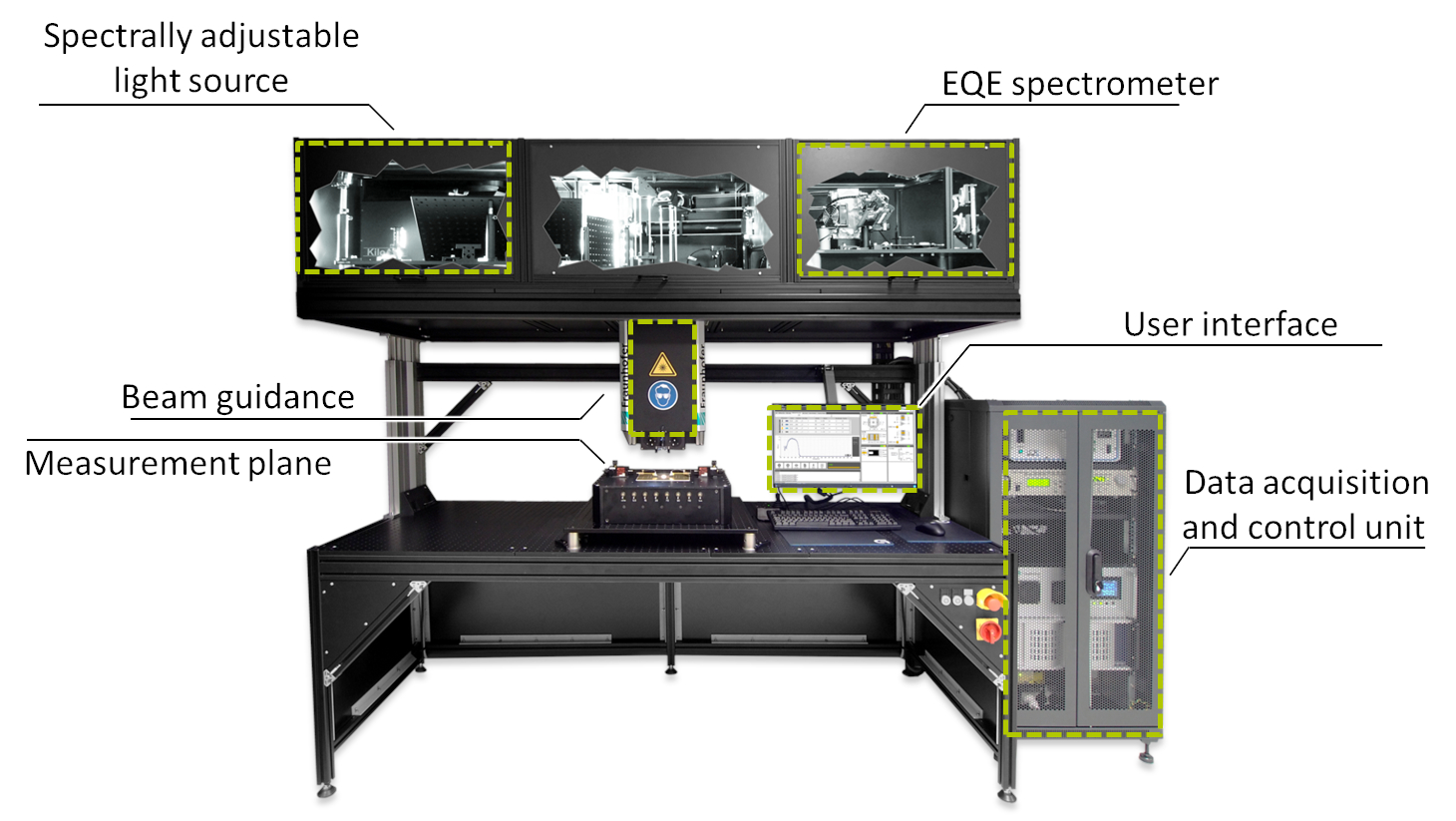
In high-concentrating photovoltaics (HCPV), the sunlight is focused with a factor of 300 to 1000 using optics onto a small solar cell with an area of few square millimeters. As the cell area is very small, multi-junction solar cells can also be used. These use the sunlight very efficiently across the entire solar spectrum. In the concentrator system, all components, such as solar cell, optics, electrical wiring, thermal design, and production technologies, must be adjusted carefully for the module in the "HeKMod4" project. We use our long-term experiences in these topics to develop a concentrator module. The basis is a novel four-junction solar cell with a Gallium Antimonide (GaSb) bottom cell. New characterization methods are developed for component and system assessment.
A novel four-junction solar cell with a Gallium Antimonide (GaSb) bottom cell is developed in the project HeKMod4. This cell has a particularly high efficiency potential of approx. 50%. During production, two epitaxy processes on GaAs and GaSb are connected via a so-called wafer bond. We continuously improved the processes and structure for this solar cell structure. This year, for the first time, an efficiency of 43.8% at 792 times the solar concentration was achieved.
For the characterization of these solar cells with more than three pn junctions, new characterization methods and calibration routines have been established. Furthermore, in the project, an innovative measuring station for determining the external quantum efficiency of multiple solar cells using frequency-division multiplexing was set up. Thanks to an extremely fast parallel measuring method, in future, the time required for the measurement can be reduced from hours to a few seconds. The solar cells were adapted to be applied in a concentrator photovoltaic module (CPV module) with mirror optics. This optics enables us to achieve modules with very low overall height and at the same time very high optical efficiency. The performance behavior was evaluated by building prototypes. In the project, modules with commercial triple-junction solar cell structures and adapted metallization as well as injection-molded mirror optics arrays with 14 optical elements could be realized. Prototypes achieve efficiencies of 29.7% in external measurements, which is a very good value at this early stage of development. The acceptance angle at which 90% of the maximum power is still generated, is also very highwith >±0.6°. Small solar cells (<1mm²) were chosen for good heat distribution. The miniaturization of the components means that a large number of components must be processed. Within the project new manufacturing technologies were evaluated in which the components are processed in parallel or in which high positioning accuracy is achieved through self-alignment.
The great advantage of concentrator photovoltaics is the high conversion efficiency of solar energy into electricity. In the project, large-area modules with four-junction solar cells were implemented as FLATCON® modules. Efficiencies under operating conditions >36% were demonstrated in outdoor measurements.
